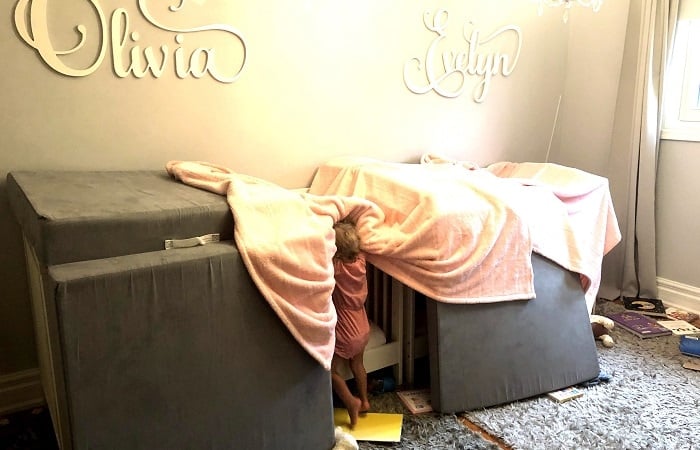Last updated on September 28th, 2021 at 01:25 pm
Are your kids constantly destroying everything in their path? Learn the how and why of destructive kids so you can save your sanity and your home!
While hitting, kicking, or biting people is not acceptable behavior, sometimes kids need to smash, pound, push, pull, climb, kick, and punch their emotions out. Opportunities to move their bodies against resistance and engage in what we call “heavy work” helps to regulate the nervous system. Sometimes destructive play (or just pure destruction) can be a result of children trying to meet their sensory and emotional needs for regulation.
Do you ever find meltdowns are worse on days you can’t get your destructive kids outside to run around, or they’re are jumping off the walls and the level of destruction is catastrophic at the end of a more sedentary day?
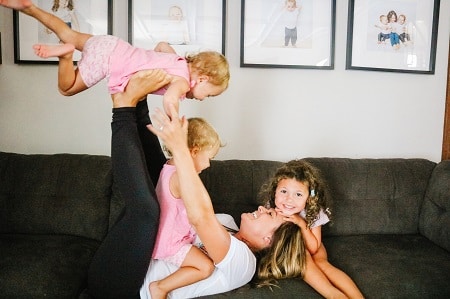
Realizing that destructive behavior doesn’t just happen
Heavy work and exercise stimulate the body systems that have an impact on serotonin levels in the brain. Serotonin is the neurotransmitter that helps to regulate our level of arousal/alertness and has an organizing and calming effect on our nervous system.
What is the first thing that happens when you think about that sound when nails are on a chalk board?
You probably cringe. Your shoulders meet your ears, your arms kind of tuck into your body and there is an increased tension across your muscles and joints. You automatically tap into your proprioceptive sensory system to organize your nervous system in preparation for a nasty auditory sensation.
Pressure or compression to our muscles and joints in this way stimulates the production of those calming and organizing chemicals to help you cope with the stressor (that yucky sound!). We do it without even thinking about it!
Think about what is happening in your body when you are nervous. Do you bite your nails? Pace? What sensations do you seek to calm those emotions or feelings inside your body?
Our body is such a powerful source of regulation and we seek input to our muscles and joints without conscious awareness to help us feel “just right”.
Figuring out the why of destructive kids
Kids are no different than us. Children’s brains are growing and making new connections at such a rate, that this incredible growth creates dysregulation and turmoil in their bodies.
Learning how to cope with new emotions, environment changes (school, daycare, a new sibling, or you know.. a pandemic), and navigating new skills can come with an increased need for regulating sensory input through the body. Some kids will naturally gravitate to destructive play as a way to instinctually meet their needs. What smart bodies and brains!
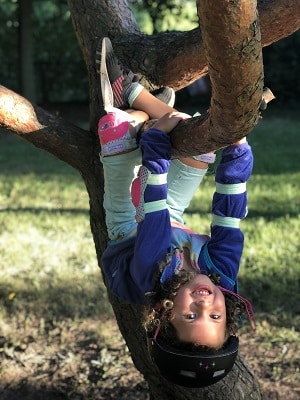
How can we curtail destructive behavior?
So how do we make space for the movement, heavy work and destruction while saving our homes and our sanity? Especially when there are two Tasmanian devils whipping through the house!?
1. Provide movement breaks or changes
Get outside and or/provide movement breaks and opportunities to move and do heavy work throughout the day so they are less likely to look for undesirable ways to meet destructive kids’ regulatory needs.
A quick search on Pinterest, “heavy work for toddlers/preschoolers/kids” will help. Choose activities that provide opportunities to move against resistance- pushing, pulling, climbing, etc.
A lot of household chores are great opportunities for heavy work and are already part of your routine, they need to be done and can give your kiddo a sense of empowerment. Let them participate in mopping, vacuuming, pulling their twin in a wagon, putting away the groceries, giving the table a scrub before it’s time to eat.
An easy way to fit in movement and deep pressure is by adding in different “animal walks” when there are natural transitions in your day. “Okay, time for a snack! Let’s all walk to the table like a crab!” “Time to get our shoes on, let’s hop to the door like a frog!” Get creative and have fun!
Have a “push the wall” spot. Have fun tracing their hands, let them paint them, put stickers on them, color them, and put them on the wall in a central location. Then add “wall pushes” as a regulation tool throughout the day or in transitions as well. Keep this fun for your destructive kids.
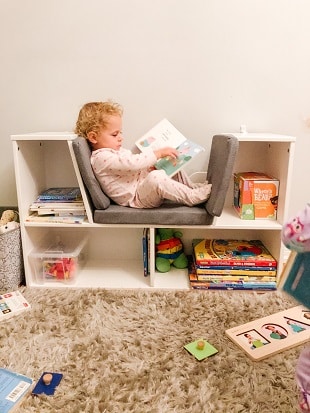
2. Allow destructive kids unstructured playtime
Adopt this golden “renegade rule” from one of my favorite books, “It’s OK NOT to Share” by Heather Shumaker: It’s OK if it’s not hurting people or property.
Kids have a right and a NEED to unstructured play. Parents have the right to set limits on time and place.
We don’t need to automatically ban your child’s destructive play. When we understand there is a physical and emotional reason that your child may be choosing that type of play we can change the timing or the location. Kids need limits to feel safe and secure and to learn what is and isn’t appropriate.
For example, “I can see you really want to run right now, it’s not safe to do that in the kitchen. Would you like to take running to the basement or outside?” Or “You both really love to wrestle. It’s not safe to wrestle beside the fish tank, wrestling is for outside”
Not sure where to set limits with destructive kids? Ask yourself the question, “Is this hurting people or property?”
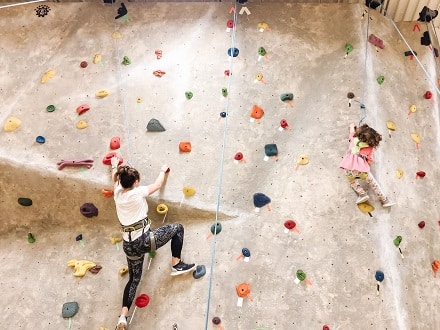
3. Designate a “yes space”
Create a “yes space” in your home or outdoors. I understand this is not possible for all families or all living spaces. However, it can be a powerful tool if you are able. Set up space in your home where exploration (or destruction) is allowed.
For little ones, a big gated area may help designate the space and keep them safe. Provide pillows for kicking and punching, blocks for building and crashing, remove any items that require a “no”. This is a great safe space to be able to contain children when you need to step away quickly to switch over a load of laundry or scrub a toilet.
Learning about impulses can shift your perspective
Shift your perspective of their behavior. A little understanding of your destructive kids can help you take their behavior less personally. It lightens the burden you carry feeling like you have to teach them how to be less impulsive/destructive and lessens the feeling that you are failing.
The frontal lobe of your brain, which is your executor of all things regulation, consequences, and “making good choices” is not fully developed until we are 25 years old. This fact alone should be a big weight off of your shoulders. Your destructive kids aren’t trying to drive you crazy. They literally do not have the brain hardware yet to fight their impulses!
Additionally, Dr. Gordon Neufeld (a developmental psychologist) describes that young children can only feel one emotion at a time. They do not have the capability to “mix” emotions until at least 3-4 years old. For children who are highly sensitive (emotionally or from a sensory perspective) this can be closer to 5-7 years old.
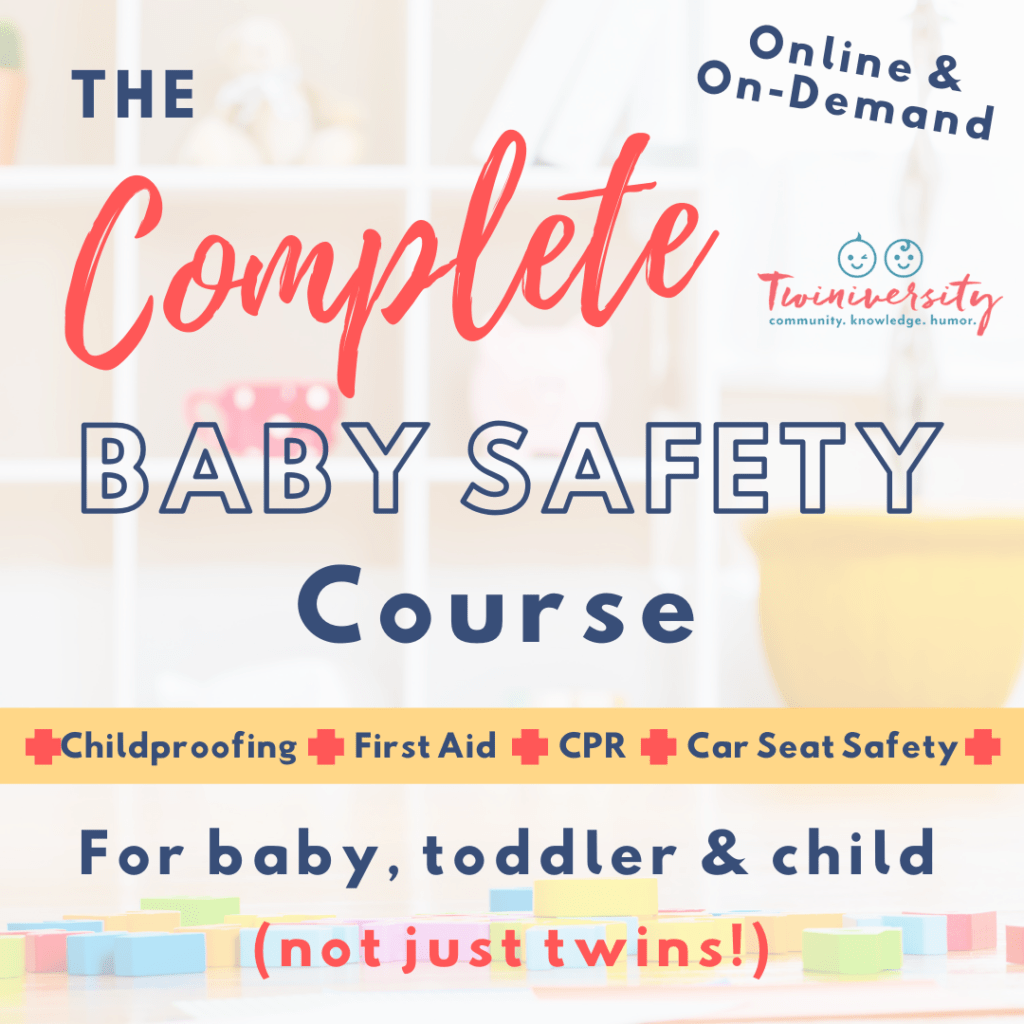
Need some baby safety training? Take the Twiniversity Complete Baby Safety course, offered on-demand. Includes video modules on infant, toddler, and child CPR, first aid, and common medical ailments, plus car seat installation and safety and childproofing your home. Click here to learn more!
They literally feel one emotion and are driven to act on that one emotion until it has passed. Don’t take it personally and don’t leave them to manage developmentally inappropriate impulses on their own. For kids younger than this age this may look like staying near to help hold boundaries calmly, “I can see you are mad your sister took your toy. That is frustrating, but I can’t let you hit her. You can hit the pillow or you can stomp your feet”.
Ask yourself if you are expecting age-appropriate behavior from your child. How can you modify the environment to keep it within their zone of learning and success?
Each new phase of development comes with its own new challenges (x2!). When we can take a step back before we react to destructive kids, we can steady ourselves and see it for a developmental phase and not a personal attack or parenting failure.


